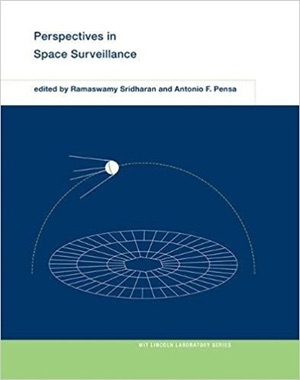Review: Perspectives in Space Surveillanceby Jeff Foust
|
| The Millstone Hill radar became part of the military’s space surveillance network and, the authors note, “the national center for expertise on these [deep-space] satellites” and how to track them. |
The books opens with a historical perspective, citing an event little known in the broader space community. In September 1972, the Soviet Union launched the Cosmos 520 satellite, the first in a series of missile early warning satellites. At that time, the US space tracking system consisted of radars that could track missiles and satellites in low orbits, and a film-based optical tracking system for the relatively small number of “deep space” satellites, such as those in geostationary or Molniya orbits. At the time of the Cosmos 520 launch, though, those cameras were being repaired, making it difficult to determine where the satellite was and what mission it might be carrying out.
The Air Force turned to Lincoln Lab, which used its radar systems to identify the satellite, repeating the feat in 1973 by immediately detecting the Cosmos 606 satellite shortly after launch. Soon thereafter, its Millstone Hill radar became part of the military’s space surveillance network and, the authors note, “the national center for expertise on these [deep-space] satellites” and how to track them.
After that historical introduction, much of the book is a technical discussion, replete with graphs and equations, of the various techniques for tracking satellites, including radars and optical sensors, as well as space-based sensors. There is, in those chapters, some historical discussion of the development of those capabilities, but the focus is on the technical aspects.
A final chapter in the book discusses a spinoff of the capabilities developed for tracking satellites: detecting near Earth asteroids. The optical telescopes and sensors developed for looking for satellites and other objects in Earth orbit could be repurposed into the Lincoln Near Earth Asteroid Research, or LINEAR, program, which became one of the most prolific discoverers of asteroids.
Perspectives in Space Surveillance is not a light read for someone with just a casual interest in space surveillance looking for an introduction to the topic. It is a rather technical book, but with some historical elements as well, as those who worked on tracking programs at Lincoln Lab describe how they evolved. Those efforts are, in some cases, many decades old, but as the population of satellites and debris in Earth orbit grows, they are as critical as ever, whether they’re done on a Hawaiian mountaintop or the outskirts of Boston.
